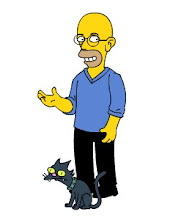
The linked Wikipedia article does a good job on the film, but by way of brief plot summary ... In the past, a conquistador sent by the Spanish Queen seeks out the Tree of Life in the jungles of New Spain, sworn to find eternal life for her. In the future, an astronaut tending a dying tree travels to a nebula containing a dying star, an event that will trigger the rebirth of the tree. In the present, an oncologist is in a race against time to develop a cure for his wife's cancer, against the backdrop of her growing acceptance of her fate.
If that all makes the film sound overblown and pretentious, well, I don't think that's entirely possible to dodge. C certainly wasn't impressed, and found the film, with its frequent flits between this triptych, to be both confusing and heavy-handed. Even I found that it walked the fine line between heartfelt and overwrought a little too carelessly at points. However, as a sucker for existential films of love and death, especially ones which incorporate science fiction elements, I loved it.
As becomes clear during the film, the past and future narratives are allegorical in nature, and are guided by the male lead's raw passion to secure eternal life for his Queen (the past), and his philosophical realisation of the limits of life and the transcendence of love (the future). Elements from the story in the present are incorporated as icons in the allegorical streams: the plant-derived, cancer-curing chemical becomes the Tree of Life in the past, and the dying tree of the future; a nebula identified by the dying wife becomes a placemarker for a Mayan temple in the past, and the destination for the astronaut in the future; the wedding ring that the oncologist misplaces in the present is given to the conquistador to symbolise the Queen's promise to marry him, and its absence is recorded by a tattoo on the astronaut's ring finger in the future.
As the film progresses, the conquistador narrative is revealed through a novel that the wife is writing, a novel that she wishes her husband to finish when she is gone. The astronaut narrative appears instead to be the husband's fantasy for saving his wife, possibly even his completion of her novel. It is infused with elements from the present and the novel's imagined past. As the film approaches its conclusion, the astronaut reluctantly appears to gain enlightenment about the fate of his dying tree, and the narrative briefly fuses with that of the conquistador. A Mayan priest sees the enlightened astronaut as the First Father, the god who gave his life to start creation. This allows the conquistador to find the Tree of Life, but it is not what it appears, and instead sparks a rebirth. These allegorical outcomes are bound to the oncologist's acceptance of his wife's death in the present.
Although the foregoing could be described (and was last night) as heavy-handed, it is achieved through subtext rather than any direct exposition. It is left to the viewer to draw out the connections, or rather, the connections that they perceive. So what I've written above may be a complete misinterpretation of the film, but it stands as a response to its art.
I can't finish up without mentioning the art direction of the film. While the past and present are mostly seen through darkened jungles or laboratories, the future is bizarrely beautiful in its representation. The astronaut is a shaven-headed monk-like figure, while his spaceship is a glass sphere, almost like a snowglobe. His journey, especially as it approaches its end and the dying star, is quite fantastic, in both senses. The imagery at this point shifts between science fiction and Buddhism, while the (relatively spare) musical score pulses the narrative towards its conclusion.
Overall, not a film that's likely to find much of an audience. Quasi-existential treatments of undying love between people rarely make the top of the box office. But brilliant. At least in 50% of the house (the cat's view is unrecorded).








No comments:
Post a Comment